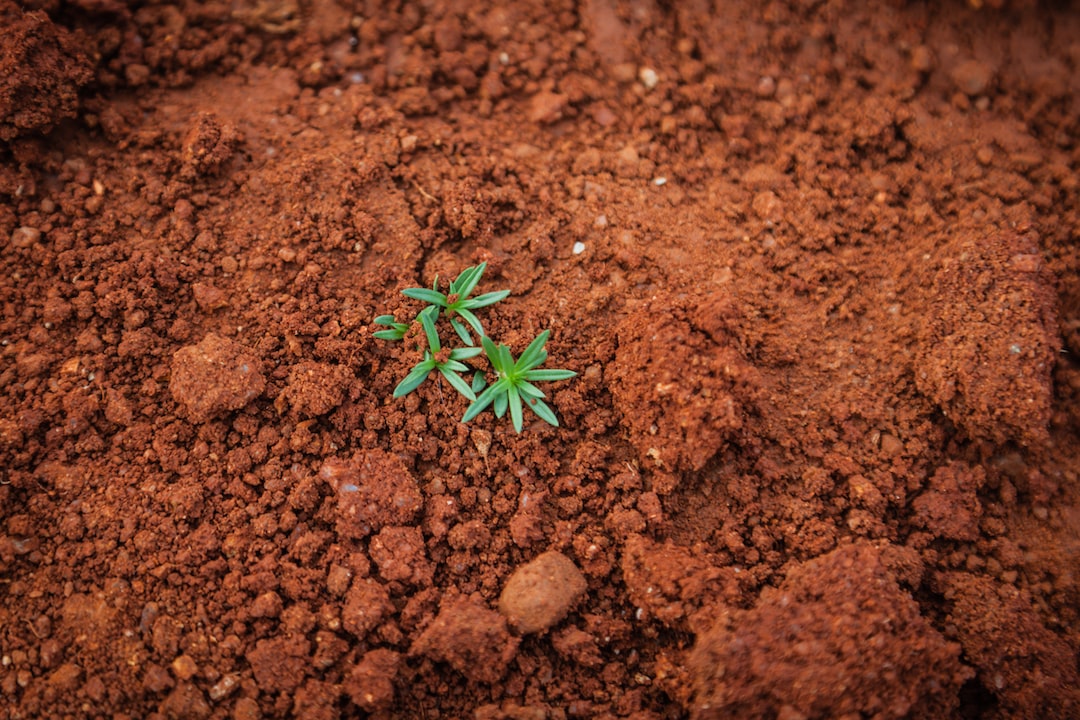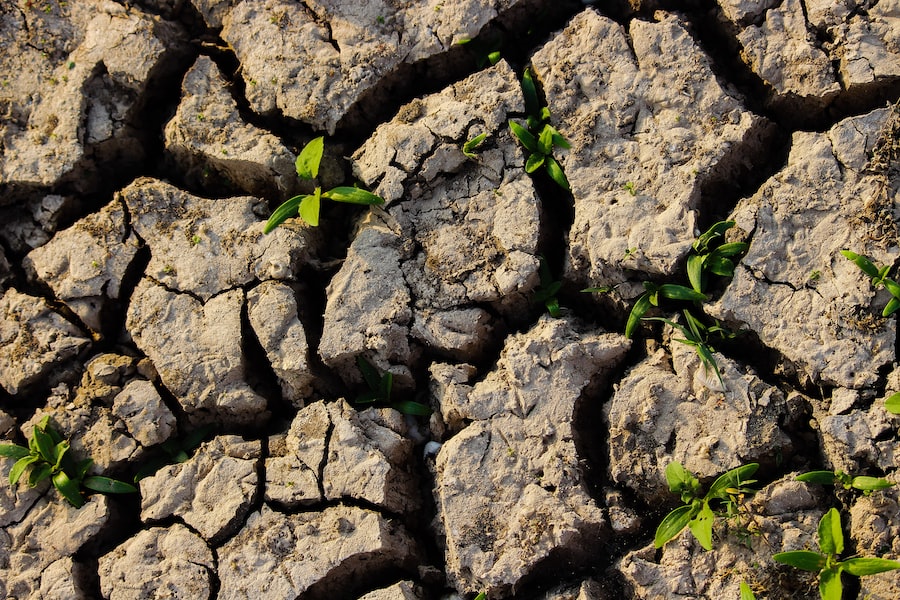Growing Juicy Blueberries: How to Acidify Your Soil for Optimal Growth

Blueberries are a delicious and nutritious fruit that can be enjoyed fresh, frozen, or in a variety of recipes. While they are readily available in grocery stores, there is something special about growing your own blueberries at home. Not only does it give you the satisfaction of growing your own food, but it also allows you to enjoy the freshest and juiciest blueberries possible.
Blueberry cultivation has been gaining popularity among home gardeners due to its relatively low maintenance requirements and high yield potential. Blueberry plants are perennial shrubs that can produce fruit for many years, making them a great investment for any garden. They are also known for their beautiful foliage and delicate white flowers, adding aesthetic value to your landscape.
Key Takeaways
- Blueberries thrive in acidic soil with a pH range of 4.5-5.5
- Testing soil pH levels is crucial for successful blueberry cultivation
- Natural ways to acidify soil include using pine needles, coffee grounds, and sulfur
- Chemical methods to acidify soil include using aluminum sulfate and elemental sulfur
- Proper preparation, fertilization, watering, and mulching are key to maintaining healthy blueberry plants and a bountiful harvest.
Understanding Soil pH for Blueberry Growth
Soil pH is a measure of the acidity or alkalinity of the soil. It is an important factor to consider when growing blueberries because these plants have specific soil pH requirements for optimal growth and fruit production. The pH scale ranges from 0 to 14, with 7 being neutral. Values below 7 indicate acidic soil, while values above 7 indicate alkaline soil.
Blueberry plants prefer acidic soil with a pH range of 4.5 to 5.5. This acidic environment allows the plants to absorb essential nutrients more efficiently and prevents nutrient deficiencies. When the soil pH is too high, certain nutrients become less available to the plants, leading to stunted growth and poor fruit production.
Importance of Acidic Soil for Blueberry Plants
Blueberries thrive in acidic soil because it creates an environment that promotes nutrient availability and uptake. Acidic soil helps release essential nutrients such as iron, manganese, and zinc, which are crucial for the growth and development of blueberry plants. These nutrients are often less available in alkaline soils, leading to deficiencies and poor plant health.
In addition to nutrient availability, acidic soil also affects the microbial activity in the soil. Blueberries have a symbiotic relationship with certain soil microorganisms, such as mycorrhizal fungi, which help enhance nutrient uptake and overall plant health. These beneficial microorganisms thrive in acidic soil, further supporting the growth and productivity of blueberry plants.
Testing Soil pH Levels for Blueberry Cultivation
| Soil pH Level | Acidity/Alkalinity | Blueberry Growth |
|---|---|---|
| 4.0-4.5 | Very acidic | Poor growth, yellow leaves |
| 4.6-5.0 | Acidic | Good growth, healthy leaves |
| 5.1-5.5 | Moderately acidic | Optimal growth, high yield |
| 5.6-6.0 | Slightly acidic | Good growth, but lower yield |
| 6.1-7.0 | Neutral | Poor growth, yellow leaves |
| 7.1-8.0 | Alkaline | Poor growth, yellow leaves |
Before planting blueberries, it is essential to test the pH of your soil to ensure it falls within the ideal range for these plants. There are several methods for testing soil pH, including DIY kits, laboratory testing, and electronic pH meters.
DIY kits are readily available at garden centers and provide a quick and affordable way to test soil pH. These kits typically include test strips or a color-changing solution that can be mixed with a soil sample. The resulting color is then compared to a chart to determine the pH level.
Laboratory testing involves sending a soil sample to a professional lab for analysis. This method provides the most accurate results but can be more expensive and time-consuming. Electronic pH meters are handheld devices that measure the pH directly in the soil. They are convenient and provide instant results, but they can be more costly than DIY kits.
Accurate pH testing is crucial for successful blueberry cultivation because it allows you to make informed decisions about soil amendments and adjustments to achieve the optimal pH range for blueberries.
Natural Ways to Acidify Soil for Blueberry Growth
If your soil pH is too high for blueberries, there are several natural methods you can use to lower it and create an acidic environment. One of the most common methods is incorporating organic matter into the soil, such as peat moss or pine needles. These materials naturally have low pH levels and can help acidify the soil over time.
Another natural way to acidify the soil is by using elemental sulfur. This sulfur is converted into sulfuric acid by soil bacteria, gradually lowering the pH. It is important to follow the recommended application rates and guidelines when using sulfur to avoid over-acidifying the soil.
Using coffee grounds as a mulch or incorporating them into the soil can also help lower the pH. Coffee grounds are acidic and can provide a slow-release source of acidity to the soil. Additionally, using rainwater instead of tap water for irrigation can help maintain a lower pH in the soil.
The benefits of using natural methods for acidification include their organic nature, which aligns with sustainable gardening practices. These methods also promote long-term soil health and fertility, as they improve soil structure and increase organic matter content.
Chemical Methods to Acidify Soil for Blueberry Plants

While natural methods are preferred by many gardeners, there are chemical options available for acidifying soil if necessary. Chemical soil acidifiers, such as aluminum sulfate or sulfuric acid, can be used to quickly lower the pH of the soil. These products should be used with caution and according to the manufacturer’s instructions, as they can be harmful if not applied correctly.
When using chemical methods, it is important to consider the potential impact on soil health and microbial activity. Chemical acidifiers can disrupt the natural balance of microorganisms in the soil and may have long-term effects on soil fertility. Therefore, it is recommended to use chemical methods sparingly and as a last resort if natural methods are not effective.
Preparing Soil for Planting Blueberries
Proper soil preparation is essential for successful blueberry cultivation. Before planting blueberries, it is important to remove any weeds or grass from the planting area. Blueberries have shallow root systems that can be easily damaged by competition from other plants.
Once the area is cleared, it is recommended to loosen the soil and incorporate organic matter such as compost or well-rotted manure. This helps improve soil structure, drainage, and nutrient availability. If the soil pH is too high, this is also the time to amend it using the natural or chemical methods mentioned earlier.
After incorporating organic matter and adjusting the pH, it is important to thoroughly mix the amendments with the existing soil. This can be done using a garden fork or tiller. The final step in soil preparation is to create raised beds or mounds for planting blueberries. This helps improve drainage and prevents waterlogging, which can be detrimental to blueberry plants.
Best Fertilizers for Blueberry Plants in Acidic Soil
Blueberry plants have specific nutrient requirements, especially in acidic soil. It is important to choose the right fertilizers to ensure optimal growth and fruit production. Blueberries benefit from fertilizers that are specifically formulated for acid-loving plants, such as those labeled for use on azaleas, rhododendrons, or camellias.
These fertilizers typically contain higher levels of sulfur and micronutrients that are essential for blueberry plants. It is important to follow the recommended application rates and timing provided by the manufacturer to avoid over-fertilization, which can lead to nutrient imbalances and plant stress.
In addition to commercial fertilizers, organic options such as compost or well-rotted manure can also be used to provide nutrients to blueberry plants. These organic amendments not only supply essential nutrients but also improve soil structure and microbial activity.
Watering and Mulching Techniques for Blueberry Growth
Proper watering and mulching techniques are crucial for maintaining healthy blueberry plants. Blueberries have shallow root systems that are sensitive to both overwatering and underwatering.
Blueberry plants require consistent moisture, especially during the fruiting season. It is important to water deeply and thoroughly, ensuring that the water reaches the root zone. Avoid overhead watering, as this can promote fungal diseases. Instead, use drip irrigation or soaker hoses to deliver water directly to the base of the plants.
Mulching is another important practice for blueberry cultivation. Mulch helps conserve soil moisture, suppress weeds, and regulate soil temperature. Organic mulches such as pine needles, wood chips, or straw are ideal for blueberries, as they also contribute to soil acidity over time.
When applying mulch, it is important to leave a gap around the base of the plants to prevent excessive moisture buildup and potential rotting. Mulch should be applied in a layer about 2-4 inches thick, extending out to the drip line of the plants.
Harvesting and Maintaining Healthy Blueberry Plants
Harvesting blueberries at the right time is crucial for enjoying their full flavor and sweetness. Blueberries are typically ready for harvest when they are fully colored and easily detach from the plant with a gentle tug. It is important to harvest blueberries regularly to prevent overripening and ensure a continuous supply of fresh fruit.
To maintain healthy blueberry plants, ongoing maintenance is necessary. This includes pruning, fertilizing, and monitoring for pests and diseases. Pruning helps maintain plant vigor and shape, as well as promotes better air circulation and light penetration. Fertilizing should be done according to the specific needs of your blueberry plants and based on soil test results.
Regular monitoring for pests such as aphids, mites, or fruit flies is important to catch infestations early and take appropriate action. Similarly, keeping an eye out for common diseases such as powdery mildew or root rot allows for timely intervention and prevention of further damage.
Conclusion:
Growing juicy blueberries at home can be a rewarding experience that allows you to enjoy the freshest and most flavorful fruit possible. Understanding the importance of soil pH and providing the right conditions for blueberry growth is crucial for successful cultivation. By testing soil pH levels, using natural or chemical methods to acidify the soil, and preparing the soil properly, you can create an optimal environment for blueberry plants to thrive.
Choosing the right fertilizers, implementing proper watering and mulching techniques, and maintaining ongoing care and maintenance are all essential for healthy blueberry plants. With a little effort and attention to detail, you can enjoy a bountiful harvest of delicious blueberries year after year. So why not give it a try and start growing your own juicy blueberries at home?
If you’re looking to make your soil acidic for blueberries, you may find this article on Lawn World’s website helpful. They have a comprehensive guide on how to adjust soil pH for blueberries, which can be accessed through their sitemap. Check it out here for step-by-step instructions and expert tips.



